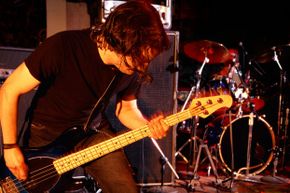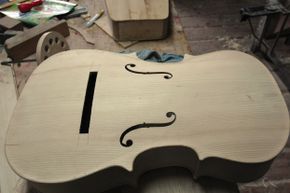Music doesn't emerge from random creative inspiration. Songs aren't chaos. Instead, they involve structure, pattern, repetition and other characteristics that make them recognizable to the human ear. In the end, music is a sort of science -- a fascinating, pulsating type of sound that peers through people's aural perceptions and into the universe beyond.
We humans have organs specifically designed to detect and understand sound. Our fleshy ears snag all sorts of sounds, from the chirping of crickets to the pounding of jackhammers, to classical music streaming through radio signals.
Advertisement
Few of us, however, take the time to really think about how those sounds move from one place to another. And not many of us probably think about why a jackhammer doesn't qualify as music but Neil Diamond does (usually). It's not just a subjective judgment. There's actually science behind music.
All music emerges from the principles found in physics and math. In fact, centuries ago, some academics considered the study of music to be a kind of science. It was regarded as an important discipline alongside mathematics, geometry and astronomy.
These days, most people agree that music is important, but it may not get the scientific respect that it should. Whether you listen to The Bangles or Boards of Canada, maybe music's scientific pedigree deserves a closer look.
Everything else in the universe is connected. So too are music and physics. Keep reading and you'll see how physics and music are interwoven.










